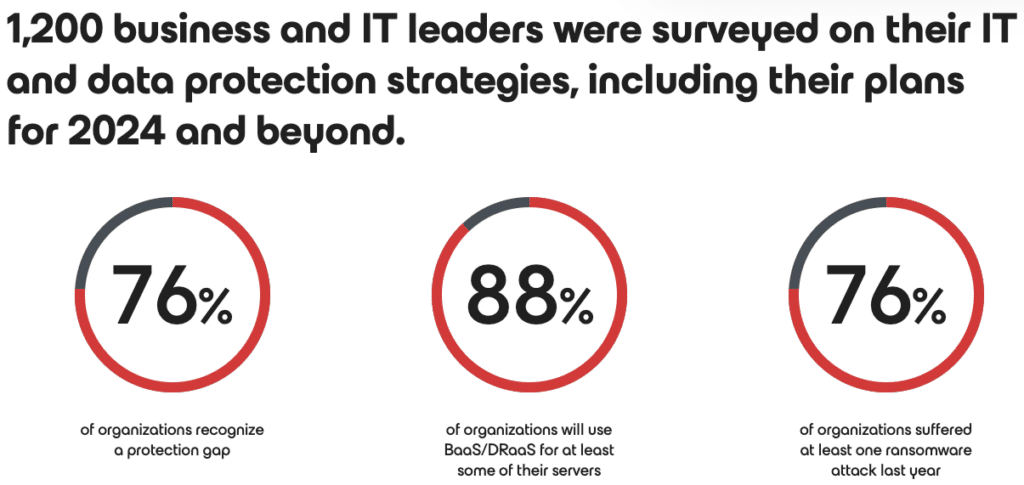A recent survey commissioned by Veeam revealed companies are feeling less protected and more concerned with the ability to recover and restore mission-critical data. That sense of vulnerability has organizations planning to spend more to fend off cyber-attacks while trying to alleviate the damage brought on by those attacks.
A recent survey commissioned by Veeam revealed companies are feeling less protected and more concerned with the ability to recover and restore mission-critical data. That sense of vulnerability has organizations planning to spend more to fend off cyber-attacks while trying to alleviate the damage brought on by those attacks.
Companies that participated in the survey believe cyber-attacks remain the biggest threat to inflict outages on their organization, resulting in loss of revenue and reputation. As such, they will focus more on utilizing cloud services to recover from significant outages. Only a small group of companies thought they could recover from a small cyber-attack in less than a week.
Dave Russell, Veeam’s VP of Enterprise Strategy, explained, “Ransomware continues to be the biggest threat to business continuity. It’s the number one cause of outages today, and protecting against it is hampering digital transformation efforts.” He said that although companies are increasing their protection spend, few believe they can recover quickly following an even small attack. He added that the insights from this year’s Veeam Data Protection Trends Report spotlight the need for continued cyber vigilance.
Notable insights from the report
- Most Organizations use containers but don’t back them up: Container usage continues to rise, with 59 percent of enterprises running them in production and another 37 percent either rolling them out or planning to. Unfortunately, only 25 percent use a backup solution that is purpose-built for containers, while the remaining organizations back up only some of the underlying components, like storage repositories or database contents. This thought process does not ensure that the applications and services will be resumable after a crisis.
- Look for significant job changes outside the organization: A substantial number of employees, 47 percent, plan to leave their current organization within twelve months. This could pose a challenge and opportunity for data protection initiatives.
- Losing valuable data protection talent puts organizations at a significant disadvantage when there is a crisis inevitably strikes; the market shift presents an opportunity to add knowledge to protect modern production workloads that reside in clouds, such as Microsoft 365, Kubernetes containers, or other IaaS/PaaS deployments.
- Reconsidering ‘backup’ for hybrid production architectures: This is the second straight year where the two most important considerations for “enterprise backup” solutions are reliability and the protection of cloud-hosted workloads (IaaS and SaaS). Organizations may find it problematic to rely on older datacenter-centric data protection solutions. Moving workloads from one platform or cloud to another, IT teams that rely on legacy backup solutions that don’t offer proper protection of cloud-hosted workloads will struggle to maintain SLAs, particularly if they embrace cloud-native offerings like Microsoft 365/Salesforce (SaaS) or containers.
Nothing is getting easier
We have been watching the increased demands in IT orgs, especially around the growth in artificial intelligence as it becomes more broadly adopted in workspaces. With AI driving an even more rapid increase in data consumption and considering all data has value, CTOs must get to the source of each failure and be ready to bounce forward. Proactively addressing an outage and initiating change is critical to maintaining a production environment. As usual, Veeam’s annual report is thorough and full of actionable insights.
Engage with StorageReview
Newsletter | YouTube | Podcast iTunes/Spotify | Instagram | Twitter | TikTok | RSS Feed

